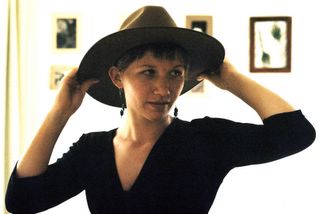Siem Reap, Cambodia, 29 January 2007
Initial impressions, so I can read over them later and muse.
The difference between Thais and Cambodians:
The Thais will try to sell you their grandmother if they think they can. They will put her in a sack and get the sack into the back of your truck and tell you that whatever is in the sack is potatoes/ elephant souveniers / diving equipment.
The Cambodians will put their grandmother in a sack and get the sack in the back of your truck but they will actually tell you that their grandmother is in the sack, and they will also tell you why you want to buy her - very politely and very persistently. (Even the fact that you already have two grandmothers is appears to be a good reason to buy one more.)
So, in Cambodia, you come away with a grandmother, but you also feel that there is some value to her.
Everything is priced in US$, this makes things easy and difficult. Easy because you don't have to master your 4000 times table. Difficult to bargin when you can only move from $1 to $1.50. I wondered aloud what one should give beggars, Cambodian Riel or US$. I was told "they accept both".
Also, there are two Cambodians beers Angkor and Anchor. The second is pronounced An-ch-or.
Haven't made it to Angkor Wat yet. We have ambitious plans to visit it at sunrise tomorrow. Still recovering from yesterday's bus journey.
The difference between Thais and Cambodians:
The Thais will try to sell you their grandmother if they think they can. They will put her in a sack and get the sack into the back of your truck and tell you that whatever is in the sack is potatoes/ elephant souveniers / diving equipment.
The Cambodians will put their grandmother in a sack and get the sack in the back of your truck but they will actually tell you that their grandmother is in the sack, and they will also tell you why you want to buy her - very politely and very persistently. (Even the fact that you already have two grandmothers is appears to be a good reason to buy one more.)
So, in Cambodia, you come away with a grandmother, but you also feel that there is some value to her.
Everything is priced in US$, this makes things easy and difficult. Easy because you don't have to master your 4000 times table. Difficult to bargin when you can only move from $1 to $1.50. I wondered aloud what one should give beggars, Cambodian Riel or US$. I was told "they accept both".
Also, there are two Cambodians beers Angkor and Anchor. The second is pronounced An-ch-or.
Haven't made it to Angkor Wat yet. We have ambitious plans to visit it at sunrise tomorrow. Still recovering from yesterday's bus journey.

